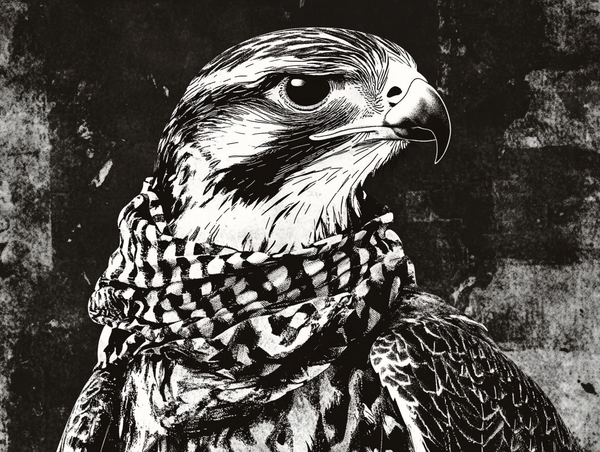Syria's Ongoing Revolution: The Uprising in Salamiyah - December 2024

A Glimpse into the Current State of Syria's Revolutions and Resilience
As we enter another week, it’s important to take a step back and reflect on the ongoing events around the world. Syria, a country that has been the epicenter of both tragedy and triumph for over a decade, continues to shape the geopolitical landscape. Recent updates from within the Syrian city of Salamiyah offer a powerful narrative of rebellion, unity, and hope in the face of oppression, demonstrating the resilience of its people as they navigate a reality shaped by war, authoritarianism, and the unyielding spirit of resistance.
The Unseen Revolution in Salamiyah
A recent personal account from Salamiyah, a city located in Syria’s Hama governorate and predominantly Ismaili, offers a striking snapshot of the shifting political and social landscape within the country. Despite the deep scars left by years of civil war, the people of Salamiyah have not lost their spirit of rebellion. On one particular night, the streets were filled with celebration. The inhabitants, empowered by the recent actions of local revolutionaries, took to the squares with fervor and defiance. They burned flags, destroyed images of the dictator Bashar al-Assad, and shouted slogans of revolution, their voices loud and united in a single cry for freedom.
This night, as described by one eyewitness, was not just a political act but an emotional release—a collective catharsis of years spent under the heavy hand of tyranny. Young people discarded military uniforms, signaling the collapse of the regime’s influence over them, and the exchange of military IDs for civilian ones symbolized their reclamation of personal identity, freedom, and dignity.
The scene in Salamiyah was not just one of rebellious youth—it was a demonstration of solidarity. Revolutionaries and ordinary citizens alike came together, bound by a shared desire for change. The relationship between the fighters and the people of Salamiyah was one of mutual respect and understanding. The revolutionaries, according to reports, had consistently treated civilians with care, kindness, and respect, ensuring that actions were not motivated by individual egos or desires but by a unified cause. One revolutionist even remarked, "We are all one in this struggle, no longer separate entities of 'the people' and 'the revolutionaries.'"
A Changing Narrative: The Government's Divide-and-Conquer Tactics
The people of Salamiyah, like so many others across Syria, have endured years of governmental attempts to sow division within their ranks. For years, the regime's narrative has painted the revolutionaries as rebels and the citizens as passive victims, unable to rise up or stand together. The government's efforts to prevent unity among the Syrian people were clear: by playing on religious, sectarian, and cultural differences, the Assad regime aimed to undermine any form of collective resistance.
Yet, in Salamiyah, this division appears to be crumbling. The personal account from a resident of the city underscores the unity and camaraderie that transcended political and sectarian lines. "No longer will we say 'the revolutionaries' and 'the people' as if they were separate entities," the eyewitness wrote, pointing to the growing realization that the fight for freedom is one that belongs to all Syrians, irrespective of background or belief. This shift is not just a political one; it is deeply personal. It speaks to the profound human connections that have been forged in the crucible of war and suffering.
In fact, the celebrations in Salamiyah were a direct rebuttal to the portrayal of the revolution as a fragmented, divided movement. The revolutionaries, it seems, have become a part of the fabric of the communities they fight for. The very idea of "the people" and "the revolutionaries" as two separate groups is becoming obsolete. What’s left is a united front of Syrians committed to a common cause: the removal of a regime that has wrought suffering for over a decade.
The Global Perspective: How the West Sees the Struggle
In the West, the conflict in Syria has often been seen through a narrow lens. For many, the portrayal of the struggle has been heavily influenced by geopolitics and the broader context of Middle Eastern relations. However, the human story of Syria—the stories of individuals rising up against tyranny, the quiet rebellions, and the unbreakable bonds formed in the face of injustice—are often overlooked or misunderstood.
Even in the most progressive circles in the West, where the value of personal freedom is held dear, there remains a deep-seated misunderstanding of the role of religious and cultural practices in the lives of individuals in the Middle East. The hijab, for instance, continues to be a point of contention and misinterpretation. In the West, the hijab is frequently viewed as a symbol of oppression. Yet, for many Muslim women, especially those in Syria, it is not just a piece of clothing—it is an act of resistance, a declaration of identity, and an expression of autonomy. The act of wearing the hijab in the face of authoritarian regimes or Western cultural pressures serves as a symbol of defiance and self-determination, much like the celebrations seen in Salamiyah.
The Role of Media: A Missing Narrative
One of the most glaring issues highlighted by the residents of Salamiyah in their reflections is the failure of both regional and international media to adequately cover their moment of triumph. As the revolutionaries celebrated and liberated prisoners, they expressed frustration that opposition media outlets had failed to capture the joy and hope that filled the streets. This omission reflects a broader tendency among media outlets to focus on the darker aspects of the conflict—the violence, the destruction, the chaos—without acknowledging the resilience and spirit of the people fighting for a better future.
The media’s inability to share the full scope of the Syrian people’s experiences limits the global understanding of the struggle. While the world may focus on the devastation, the story of Salamiyah serves as a reminder that hope and solidarity are still alive in Syria, even if they are not often broadcasted or acknowledged by mainstream channels.
Conclusion: A Message of Hope and Solidarity
In conclusion, the situation in Syria remains one of the most complex and volatile conflicts of our time. As we navigate the shifting allegiances and fractured power structures, it's important to remember that there is no simple "right" or "wrong" side. While Assad’s regime continues to be a focal point of opposition, the rise of extremist factions such as HTS adds yet another layer of uncertainty to the region. The battle for Syria’s future is not just about removing a dictator or defeating an extremist group—it’s about finding a way to create peace, stability, and a lasting solution for the people who have endured years of suffering.
As the conflict continues to evolve, staying informed and critically engaging with multiple perspectives is essential. The global and regional implications are vast, and no single viewpoint can encapsulate the realities on the ground. Whether we are talking about the fate of Syria's civilians, the role of foreign powers, or the rise of new factions, the situation calls for careful observation, understanding, and dialogue.
The road to peace in Syria will be long, and it will require the commitment and support of the international community. For those of us looking to make sense of it all, we must remain vigilant in our quest for truth and clarity—because only through knowledge can we hope to understand, and ultimately contribute to, a more peaceful future.
Let’s continue the conversation. Stay informed, stay engaged.
Written By Dhamiri
December 2024



